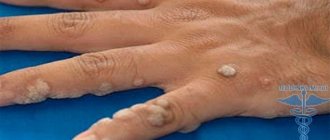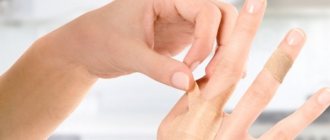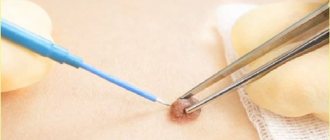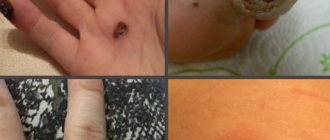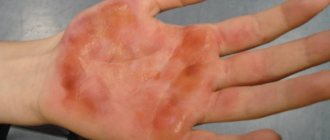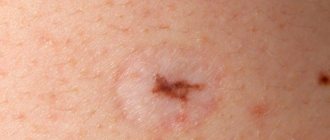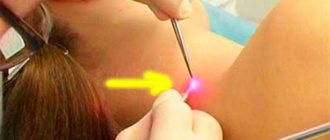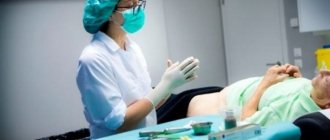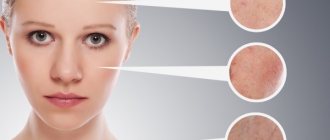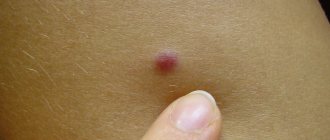Warts, papillomas and condylomas - all these benign neoplasms appear on the human body due to damage to the body by papillomavirus. Their appearance causes a lot of unpleasant moments related to both appearance and more serious problems. They are not very large (up to a maximum of 2 cm in diameter) growths of very different shapes.
To neutralize them, pharmacological drugs and modern devices for removing tumors on any part of the skin, including a radio wave device, liquid nitrogen or laser, come to the aid of a person. Everyone chooses the best option for themselves, but we will try to tell you in detail what to do after removing a wart with a laser or other method. Wound care is essential to avoid complications.
Modern method of wart removal
The prerequisite for the appearance of warts is reduced human immunity. The growths grow quickly and can form entire clusters. You can become infected with the papilloma virus, the root cause of the disease, through contact with a sick person or through his personal belongings. Whatever the reason for the appearance of warts, they must be dealt with. The first stage of complex treatment is the removal of all formations on the skin.
Content:
- Modern method of wart removal
- What warts can be removed with laser?
- Benefits of the procedure
- Contraindications for this procedure
- How is the procedure performed?
- Rehabilitation after laser removal
- Home care
Modern methods of excision of warts include radio wave and laser removal. Destruction of skin tumors using a laser is the simplest and most painless procedure that guarantees a stable result. A mini-operation is performed using local anesthesia and without additional lengthy preparation. Delicate removal of the growth is carried out in a specialized office and only by an experienced doctor. The stages of the procedure and the qualifications of the doctor guarantee that there will be no relapse of the disease in the near future.
Causes of warts
They arise due to severe proliferation of the surface layer of the skin. This is caused by the human papillomavirus (HPV). Infection occurs through direct contact with a virus carrier or through common objects, such as a razor.
For HPV to enter the body, it requires a so-called entry gate - a scratch or wound on the skin. Having penetrated the epithelial cells, the virus moves towards the nucleus. It is in it that its development and subsequent reproduction occurs. If the immune system is functioning normally, infected cells are destroyed. HPV can “sleep” in the body for many years without manifesting itself. And only with weakened immunity does it begin to affect many epidermal cells, which leads to the appearance of warts.
What warts can be removed with laser?
Papillomas can differ in appearance and location on the human body. Warts affect the arms, legs, back and face of both adults and children. There are no age restrictions for patients suffering from papillomatosis. Laser therapy can remove plantar warts. These are neoplasms on the foot that develop in the horny part of the skin. By layering, the dead skin turns into a compaction with a visible, clear core in the center.
Using a laser, ordinary warts are removed: growths of a dense, rounded structure. Such warts differ from the color of the skin (they are much darker). Over time, common warts increase in size and annoy a person: they bring severe discomfort and periodically hurt.
Laser therapy is used to remove flat warts. The size of small formations is no more than 1 cm. The growths have a flat structure and from the outside resemble skin-colored nodular formations. Flat warts do not rise much above the skin and rarely cause discomfort in humans. Before prescribing a laser technique to remove the growth, an accurate diagnosis is determined - the wart and its type are examined.
Indications for this method
Not all warts can be removed; if they do not bother a person and are in an inconspicuous place, and do not pose a threat to the body, they are usually not removed. Some small growths may dry out and fall off on their own.
But there is a certain category of warts that should be surgically removed immediately, without waiting for them to have negative consequences:
- If the histology results showed the presence of cancer cells in the skin growth.
- A large formation, both in terms of the area it occupies and the depth of its growth.
- If there is an urgent need to remove the growth, other methods other than surgery are not suitable.
So the following changes in warts are subject to mandatory removal:
- The shape and color of the wart began to change.
- The color of the skin formation is not uniform.
- The number of warts began to grow.
- The appearance of bloody discharge from papilloma.
- Pain is felt at the site of the growth.
- Accumulation of warts in the genital area.
After the diagnostic measures have been carried out, the doctor will decide which method is best to remove such skin formations.
Benefits of the procedure
During the initial examination, it is necessary to establish the status of the neoplasm. If it is not malignant, it can be removed using one of the modern methods. When it comes to warts on the feet, their removal is carried out in several stages - such formations often have rods that grow into soft tissue. Warts on the feet constantly hurt and cause discomfort while walking. Only with the help of the laser method is the removal of such warts carried out in one stage, and it allows you to quickly recover from the procedure.
Root calluses are difficult to remove without subsequent relapses: simple surgical excision is ineffective. Laser therapy helps destroy all virus-infected cells, even those that are not visible to the naked eye.
The advantages of laser therapy include: the speed of the procedure and the speed of recovery. In total, removing the growth takes no more than half an hour, depending on the complexity of the tumor and the number of warts. The minimum number of contraindications makes laser therapy universal and safe for children. The procedure is allowed from the age of 5.
The painless procedure is suitable for people with hypersensitivity: a small amount of medication and painkillers are used to excise the wart.
After laser therapy, there are virtually no scars or hard scars left on the affected area of skin. Quick recovery and low risk of complications are the main advantages of the procedure compared to other modern techniques. Innovative equipment allows mini-operations to be performed without significant discomfort for the patient. Rehabilitation of the patient is carried out at home in his usual conditions.
Contraindications for this procedure
This effective technique has a number of contraindications. In preparation for the mini-surgery, the patient undergoes a complete examination of the body. Based on the results obtained, the attending physician evaluates further treatment methods and risks for the patient. Contraindications to laser therapy:
- skin rash and herpes;
- advanced dermatitis;
- high blood pressure;
- acute respiratory diseases (the patient has a weakened immune system after illnesses);
- malignant diseases.
A pregnant woman should refuse the procedure: if possible, laser therapy is postponed until the postpartum period. If a rash of unknown origin appears on a person’s body, it is necessary to wait a little while removing the warts. Systemic diseases are direct contraindications to mini-surgery.
Diseases of the thyroid gland exclude the use of a laser beam to remove an unpleasant wart. Sun allergy is a rare disease that does not allow a laser procedure: in such cases, warts are combated using radio wave therapy. Severe renal and liver failure is a contraindication to mini-surgery. Before using the modern technique, it is necessary to take into account all contraindications that can cause serious complications in an adult or child.
How is the procedure performed?
The procedure is carried out under sterile conditions. The patient first undergoes blood and urine tests. Based on the results obtained, the type of anesthesia used and painkillers that will be needed during laser therapy are determined. The non-invasive method eliminates any contact with the skin: the person sits on a comfortable couch in a lying or sitting position. A drug is injected on the sides of the wart, which should reduce any pain.
After 5-10 minutes, the injected drug begins to act. The laser beam acts on the growth within a few minutes. After the procedure, the affected area of skin is treated with special products and a bandage is applied.
The half-hour operation does not require hospitalization of the patient: immediately after laser therapy, the patient goes home on his own.
Skin treatment and re-dressings are carried out at home. During the procedure, the likelihood of bleeding is completely eliminated. If there is no cut on the skin, infections or pathogenic microorganisms cannot enter the wound - secondary postoperative infection is excluded.
Rehabilitation after laser removal
The healing of the skin area affected by the wart directly depends on the procedure performed. The high-tech laser is completely sterile (bactericidal). It acts on the skin and does not cause inflammation - for this reason, there are no scars or noticeable scars left on the body. The causative agent of bacteria or viruses is completely destroyed in the laser-treated area. Immediately after the procedure, slight discomfort may be felt under the bandage, which soon goes away.
The skin is completely restored within 2 weeks (up to a month in people with weakened immune systems). A hard crust forms on the treated area: healing occurs underneath it. Once the underlying skin has healed, the scab will fall off without further damage.
The crust lasts for about 10 days and does not cause any discomfort in humans. New skin appears in the third week after the procedure.
Best materials of the month
- Coronaviruses: COVID-19
- Antibiotics for the prevention and treatment of COVID-19: how effective are they?
- The most common "office" diseases
- Does vodka kill coronavirus?
- How to stay alive on our roads?
Possible complications
Laser removal of warts usually occurs without complications, however, the risk of such conditions is still present. It depends on the individual characteristics of the patient, the correctness of the rehabilitation period, the skills of the attending physician and other factors. To reduce the risk of complications, it is important to have surgery to remove warts only in a trusted clinic.
Possible complications include:
- Wound infection. This condition is most often explained by insufficient proper care and makes itself felt by redness of the skin around the crust, swelling and pain. There may be discharge of pus. Infection occurs more often in areas of the body that are open and more susceptible to attack by aggressive microorganisms, for example, on the fingers, feet and palms.
- Formation of significant scars. Such a complication can be provoked by the individual characteristics of the patient, the inflammatory process, insufficient professionalism of the doctor and improper care of the postoperative wound.
- Damage to healthy tissue. If the skin is overexposed to the laser, it may swell, become red, hot, and develop watery blisters. Most often, this complication is noticeable immediately after laser removal.
- Pigmentation disorder. If the laser was not adjusted correctly or the patient did not provide adequate care for the wound, then light or dark spots may remain at the site of the wart. Sometimes they go away on their own, but in some cases additional correction must be made to eliminate them.
As a rule, after laser removal of a wart, the skin recovers quite quickly. If the wound does not heal, becomes inflamed and causes discomfort, it is important to seek medical help as soon as possible.
